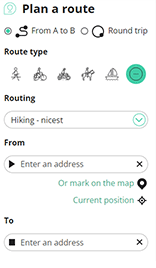Bergen-Belsen displaced persons camp was a displaced persons camp for refugees after World War II, in Lower Saxony in northwestern Germany, southwest of the town of Bergen near Celle. It was in operation from the summer of 1945 until September 1950. For a time, Belsen DP camp was the largest Jewish DP camp in Germany and the only one in the British occupation zone with an exclusively Jewish population. The camp was under British authority and overseen by the United Nations Relief and Rehabilitation Administration with camp directors that included Simon Bloomberg. Today, the camp is a Bundeswehr barracks, having been a British Army base until 2015.
On 15 April 1945 the British Army liberated the Bergen-Belsen concentration camp, which was handed over by the SS guards without a fight. Diseases and the terrible unhygienic state of the concentration camp buildings caused the British Army to relocate the former inmates and eventually to burn the prisoner huts. The survivors of the concentration camp became the first residents of the future DP camp, which was around 2 kilometres from the main concentration camp area, in a former German Army barracks, that later became a British Army camp, known as Hohne Station. Initially, the British medical staff used buildings in the former Panzertruppenschule as an emergency hospital to treat the former inmates away from the disastrous conditions of the concentration camp. On 21 April the first patients were moved to the new location, disinfected and issued with new clothing. This movement of people was completed by 18 May and at that point the former barracks had around 12,000 hospital beds. The British also moved the wounded German soldiers from the Wehrmacht Reservelazarett to civilian hospitals and added the Reservelazarett to their hospital space. This raised the number of available beds by a further 1,600. Within the first four weeks almost 29,000 survivors from Belsen concentration camp were moved to the emergency hospital. Around 14,000 former inmates died after liberation despite the best efforts of the British Army, the British Red Cross and many others of various nationalities. By June 1945, around 11,000 of the former inmates still required emergency treatment.
Source: Wikipedia.org
Copyright: Creative Commons 3.0
![]() | | Public | German
| | Public | German
Celle, Germany
Discover the most beautiful and popular trails in the area, carefully bundled into appropriate selections.
Discover the most beautiful and popular attractions in the area, carefully bundled in appropriate selections.
With RouteYou, it's easy to create your own customised maps. Simply plot your route, add waypoints or nodes, add places of interest and places to eat and drink, and then easily share it with your family and friends.
Route planner

<iframe src="https://plugin.routeyou.com/poiviewer/free/?language=en&params.poi.id=1390833" width="100%" height="600" frameborder="0" allowfullscreen></iframe>
Try this feature for free with a RouteYou Plus trial subscription.
If you already have such an account, then log in now.
© 2006-2024 RouteYou - www.routeyou.com